Ciao,
how are you? January seemed to fly by and I am still locked out of my social media accounts, but enough of that. You already pre-approved this month's topic in the newly established Substack Chat, so here we go!
Brandalism. Challenging and changing dominant narratives in advertising.
During the European Motor Show in Brussels in mid-January, an audacious subvertising campaign was carried out by the forces of Subvertisers International, Brandalism and Extinction Rebellion. Political activists made their presence felt by hijacking over 400 billboards throughout Europe and displaying provocative posters made through what is known as “subvertising.” This form of street art has been around for quite some time now but has steadily been gaining attention over recent years.
Subvertising involves replacing existing logos or adverts with alternative messages, usually satirical or subversive. Deriving its name from subvert + advertising, the practice consists in taking over ad spaces in the city as an act of civil disobedience.

The motor show protest in mid-January was initiated to draw attention to the aggressive lobbying actions being carried out by Toyota and BMW in opposition to climate policy initiatives, and to call out the companies for their misleading commercials.
With this action, activists hoped to alert people to an alarming statistic: despite promises from automakers to shrink their emissions, they remain one of biggest sources of pollution worldwide. To reveal what's behind carmakers' 'green' claims (a.k.a. greenwashing), this campaign used their own method - advertising.
What I find most interesting about Subvertising is -indeed- its reliance on corporate advertising tactics. It's a classic case of David versus Goliath, with ad busters outsmarting giant corporations in their realm of expertise.
Even though Extinction Rebellion demonstrators have, for months now, resorted to roadblocks in busy streets and glued themselves to famous artworks as a means of protest, I think street art is proving to be a far more effective way of conveying their message. Rather than compelling people away from the environmental cause they are fighting for, it gives them an opportunity to engage in a meaningful dialogue.
Do you agree?
Let me know in the comments, or by replying to this email.
Until next month,
Giulia
ps. The chat is a conversation space in the Substack app that I set up exclusively for my subscribers — kind of like a group chat on Telegram. I’ll post short prompts, thoughts, and updates that come my way, and you can jump into the discussion.
To join my chat, you’ll need to download the Substack app. Chats are sent via the app, not email: turn on push notifications so you don’t miss conversation as it happens.
And if you don’t feel like it, no worries. We are still going to meet in your inbox every 1st of the month ;)
New on the blog!
Can Art Change the World? JR bets it does.
By bringing his artwork to public spaces, French street artist JR offered an accessible way for people from all walks of life to appreciate and engage with art. Already from his early works, we can see how he used the structure of cities - lines, shapes, and forms - to create a backdrop for highlighting individuals.
Vegan and Vegetarian Food and Restaurants in Rome.
I’ve been eating vegetarian in Rome for the past two years, and here is a look at my favorite restaurants, plus a list of popular Roman dishes that are traditionally vegan or vegetarian, which you can find almost everywhere, and also a list of useful Italian expressions and vocabulary for vegans and vegetarians.
Updated!
At last, I’ve updated my article on abandoned places in Rome adding the story of the City of Rugby, a €30 million construction in western Rome that has never been used.
You somehow stumbled upon my blog and subscribed to the newsletter, but you have no idea who I am and how my blogging journey has unfolded so far? Here I share the ups and downs of my first 11 years of blogging :)
If you value genuine blogging, and have been using my travel and street art maps, please consider making a contribution. Your support makes all of this possible.
Handpicked by yours truly
In this issue, I’m gonna share my top links about Brandalism. Let me know if you find them interesting and, most of all, if you want this segment of the newsletter to focus each month on a specific topic, or you prefer to wander between various links and recommendations based on what I’ve seen, read, done in the previous month.
(you can always suggest a topic or give a feedback on the newsletter by replying to this email)
The Brandalism Guidebook by Bill Poster is a handbook for creative activists who wish to use public advertising to communicate their messages and to make a statement about politics, culture, and social change. The book provides an overview of the global rise of street art and outlines the key principles and strategies for using the medium as an effective tool for social change. It also provides a step-by-step guide to launching a successful brandalism campaign, as well as advice on getting involved in advocacy and activism. Bill Poster's book also includes interviews with some of the world's most celebrated brandalists and examines their work to better understand the motivations and objectives behind the projects.
The best-known subvertiser from Italy is HOGRE, who shared his perspective on the movement in the book “Subvertising: The Piracy of Outdoor Advertising”, published in 2017 by Dog Press (here you can read the Italian edition for free). This book looks at the different types of advertising—from billboards to online ads—and the strategies that can be used to counter them. It dives into the history of subvertising, the tactics used by activists to challenge and undermine dominant advertising messages, and the legal implications of subvertising. It also provides practical tips for subvertisers, such as finding a location for subvertising, designing creative pieces, and connecting with other activists.
Among the many initiatives organized by this worldwide movement, there’s “No Ad Day.” Happening every Black Friday, participants would remove advertising from the public spaces, often replacing them with artworks or ‘subverts’ (alterations of an existing ad.) Read more about “No Ad Day” on the blog and check out the photos from the subvertising actions I joined in Norway and the UK.
I’ve already shared it in the past but, in case you missed it, this is the database of all the artists who have joined the Brandalism movement, with loads of photos from their actions.
One link for the nerds (I see you!): in this academic paper from 2020, Thomas Dekeyser extends debates around the diverse and sometimes divergent ways in which public space is modulated and managed to accommodate certain bodies while excluding others.
“In this article, I draw from 24 months of ethnography with subvertisers to suggest that a particular ideal of public space, that of a ‘regime of order’, is folded into the hegemonic spatial management of urban communication by advertising actors.” - Thomas Dekeyser.
My Street Art Travel Guide of Lisbon was credited by Italian blogger Disagian in his video series from Portugal’s capital city. Let me share one of his videos, it’s in Italian but you can still admire the awesomeness of my favorite area in Lisbon: Marvila.
My favorite movie among all those I watched in January is “Her” (by Spike Jonze) telling the story of a man who falls in love with a computer operating system. The film is set in the near future and explores what it means to be in love with something that doesn't have a physical form.





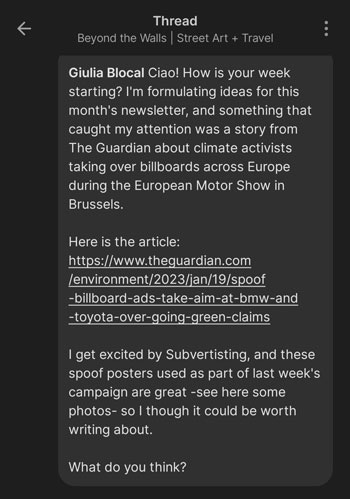
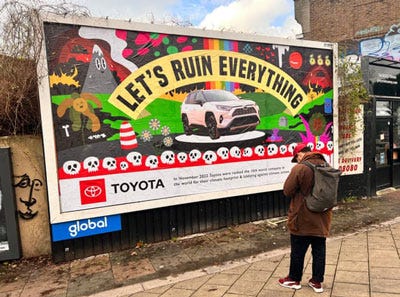
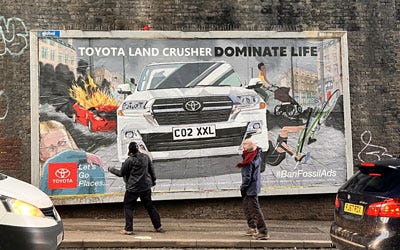
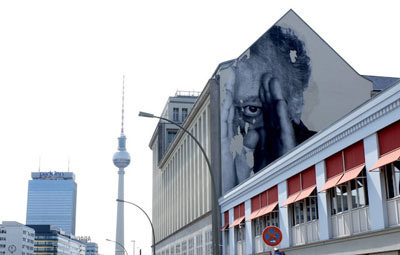

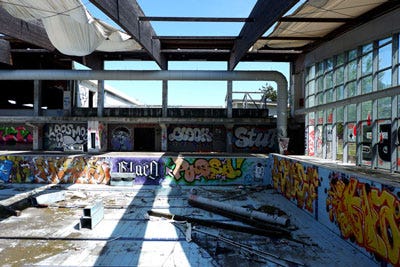
Lest not forget ADBUSTERs way ahead of curve for Brandalism https://www.adbusters.org/